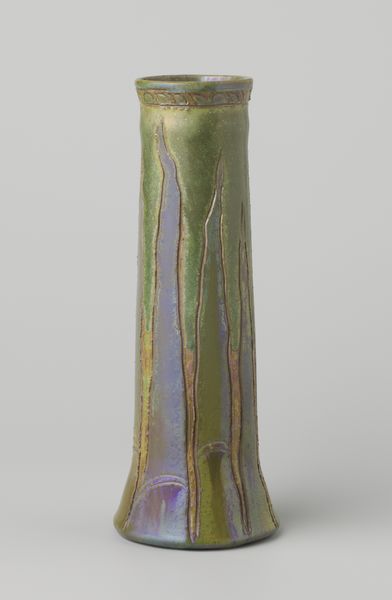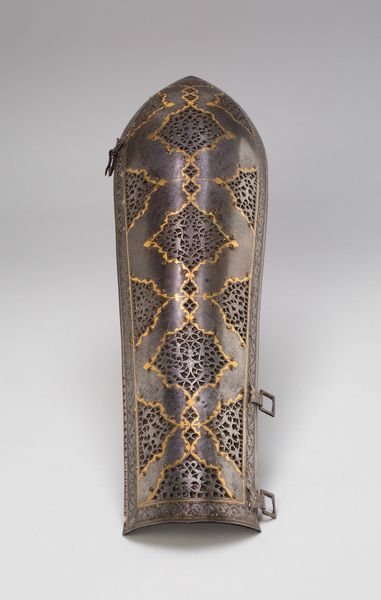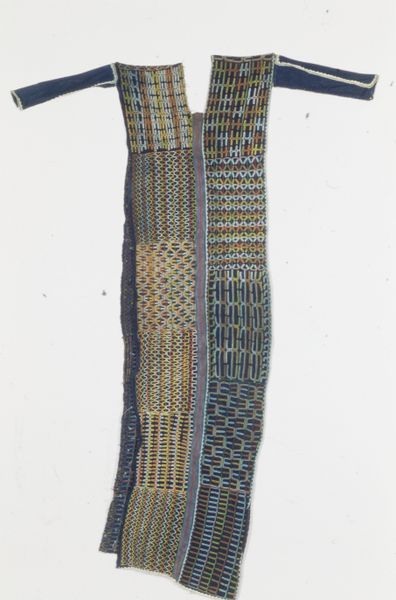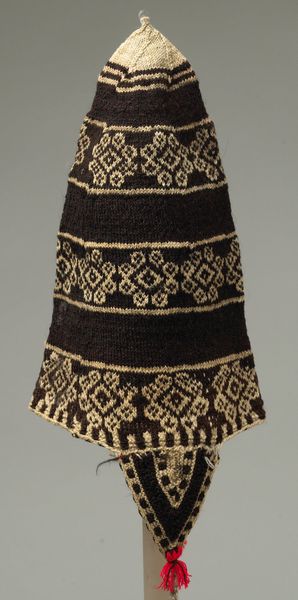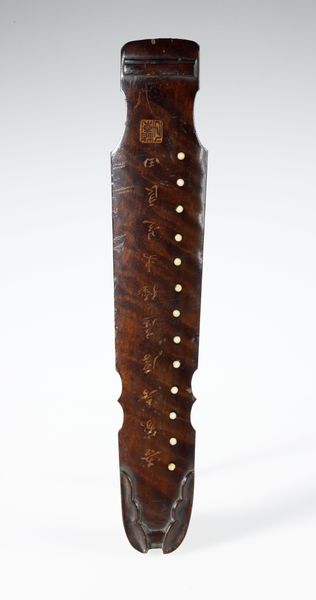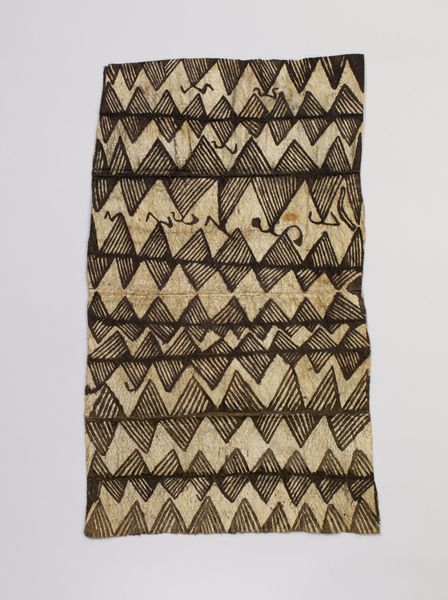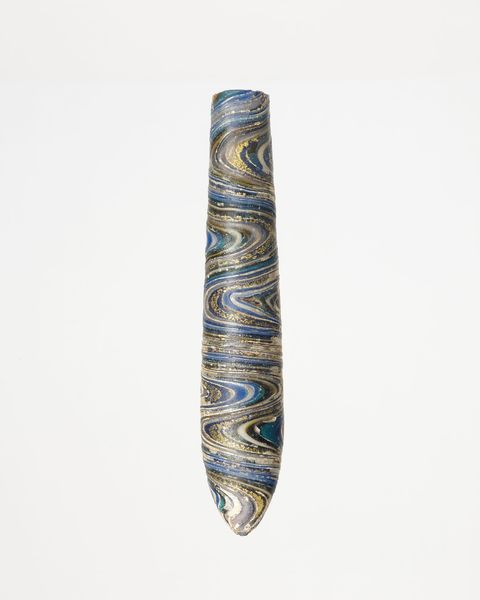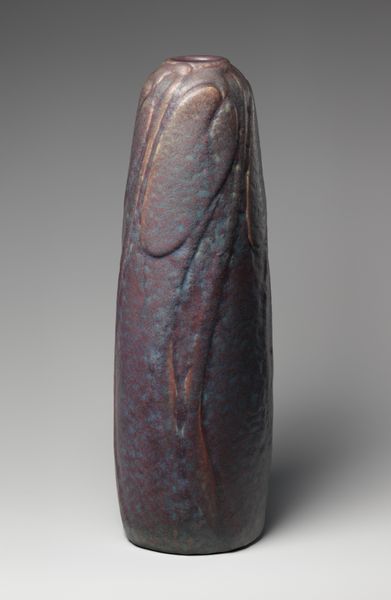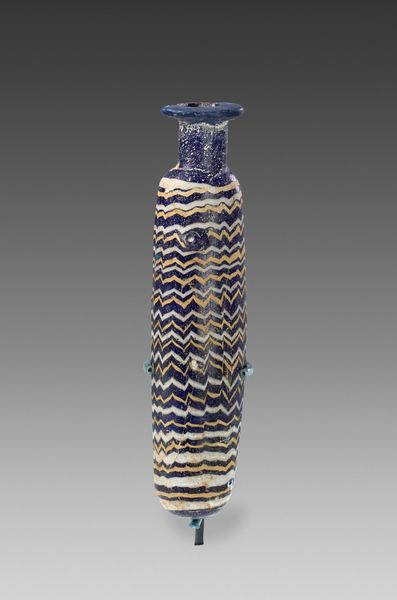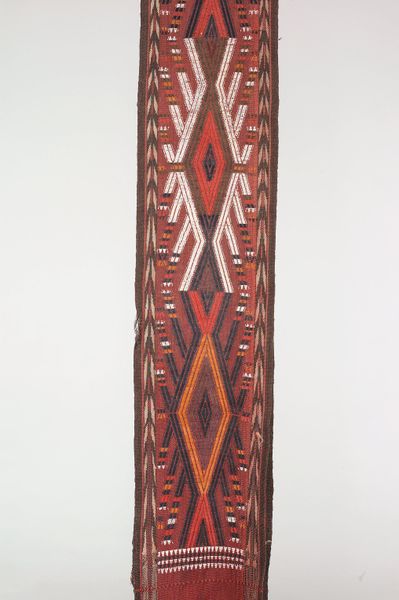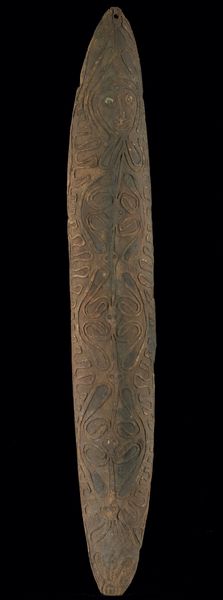
Alabastron (Container for Scented Oil) c. late 6th century
0:00
0:00
ceramic, glass
#
ceramic
#
glass
#
vessel
#
geometric
#
ancient-mediterranean
#
ceramic
#
islamic-art
#
decorative-art
Dimensions: 14.9 × 4 × 3.2 cm (5 7/8 × 1 5/8 × 1 1/4 in.)
Copyright: Public Domain
Curator: Here we have an Alabastron, a container for scented oil, dating from the late 6th century. This delicate piece crafted with ceramic and glass comes from the ancient Eastern Mediterranean region. Editor: Oh, my! It's like looking at an ancient, psychedelic candy cane. So much pattern, but a soothing colour palette of browns, yellows, and blues. It's incredibly intricate and pretty darn charming, I must say. Curator: Indeed. The Alabastron was integral to daily life and ritual. Perfumes and oils weren't just about smelling good; they were closely tied to social status, religious practices, and even healing. So its design—with the zig-zag pattern along the body of the bottle, the little lug handles—serves specific functional and social purposes. Editor: When I see a little piece like this surviving from so far back, I can't help imagining someone actually using it. Touching it every day! Imagine what its scent was like. All the hands it’s passed through…I love that almost spiritual link across time and history. Curator: It’s tempting to think of these objects in isolation, as precious relics displayed behind glass, but we also must contextualize how access to these objects was curated, viewed and valued within ancient society, in relation to gender roles, power and economy. It speaks volumes, doesn't it, about what ancient peoples deemed important? Even something as everyday as scented oil! Editor: Absolutely. Now I'm curious about the vessel's physical shape! Did the elongated shape affect how precious oils aged? Were they displayed like precious gems? Tell me everything! Curator: An important consideration, for certain. Further scholarly research reveals its value: often presented as votives to deities or grave goods signifying status, mirroring the society of ancient Egypt. This particular object from our gallery echoes similar historical contexts and symbolic intent. Editor: Incredible. So more than just a pretty package... it was a loaded message! I definitely have a new appreciation for this little gem now. Curator: Absolutely. It encapsulates the multifaceted role of even the most quotidian objects in mirroring and shaping our collective narrative across epochs. Editor: A history lesson that really hits the senses. It almost makes me want to go concoct my own scented oils, ha! Thanks, this has been eye-opening!
Comments
No comments
Be the first to comment and join the conversation on the ultimate creative platform.
